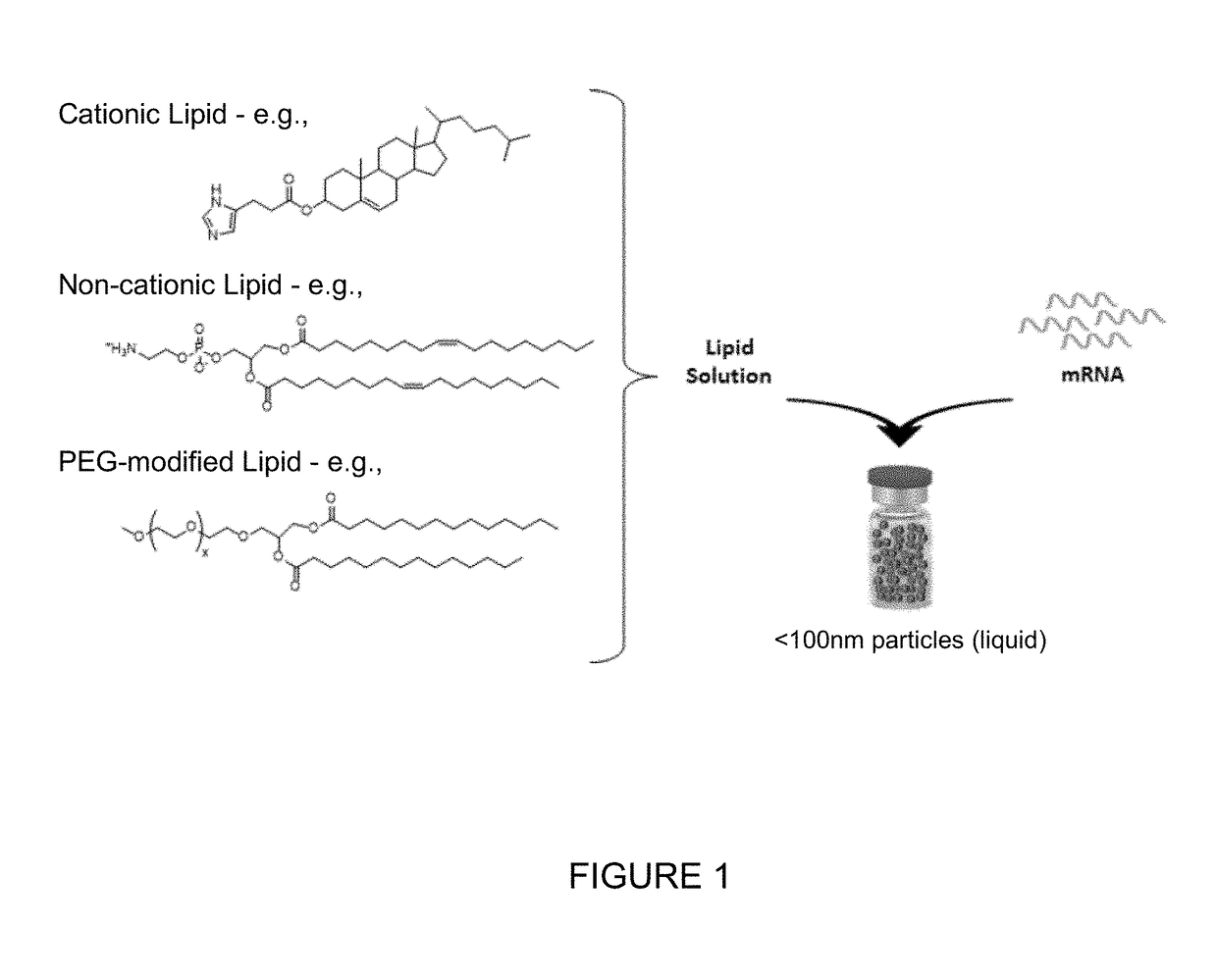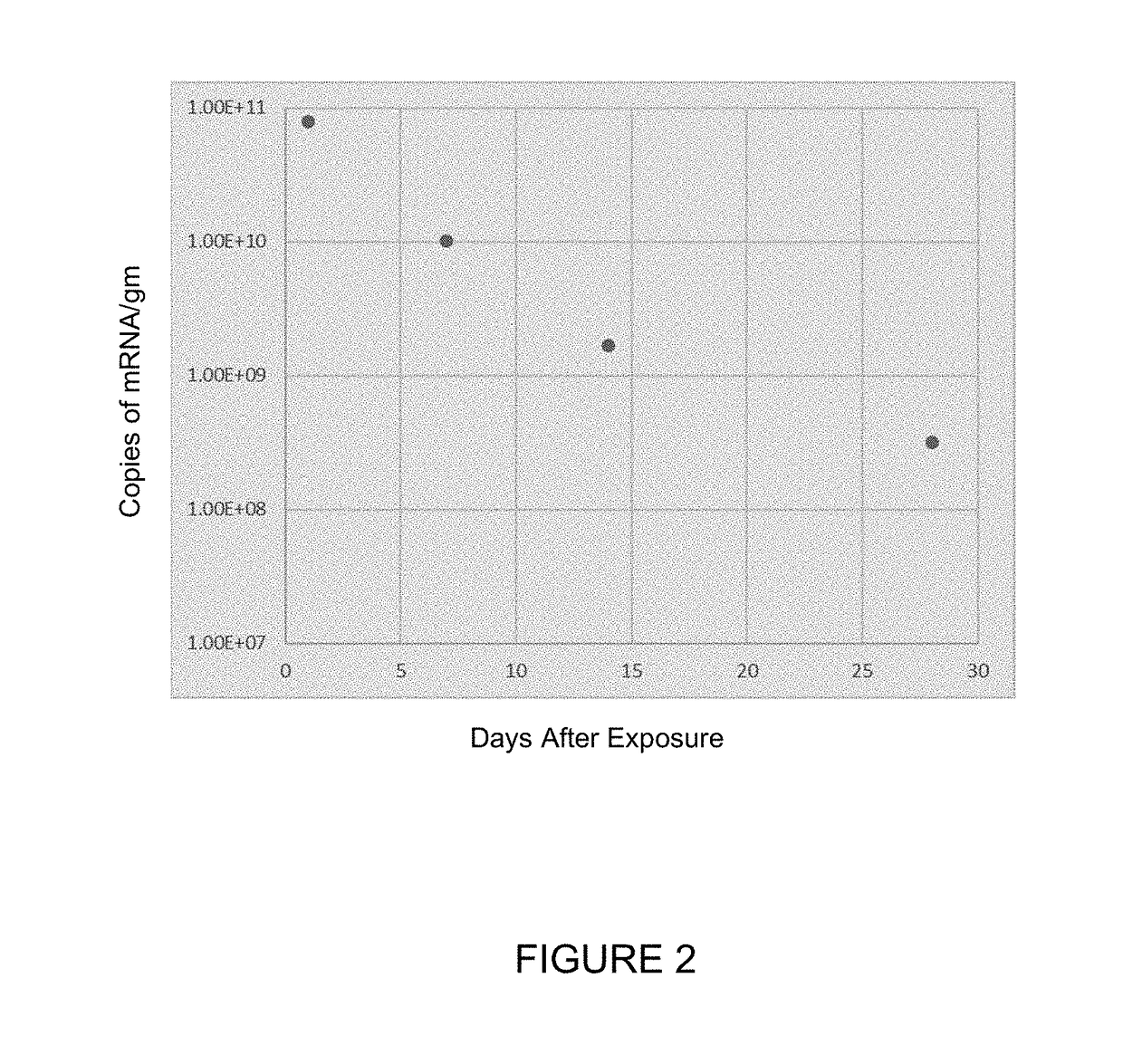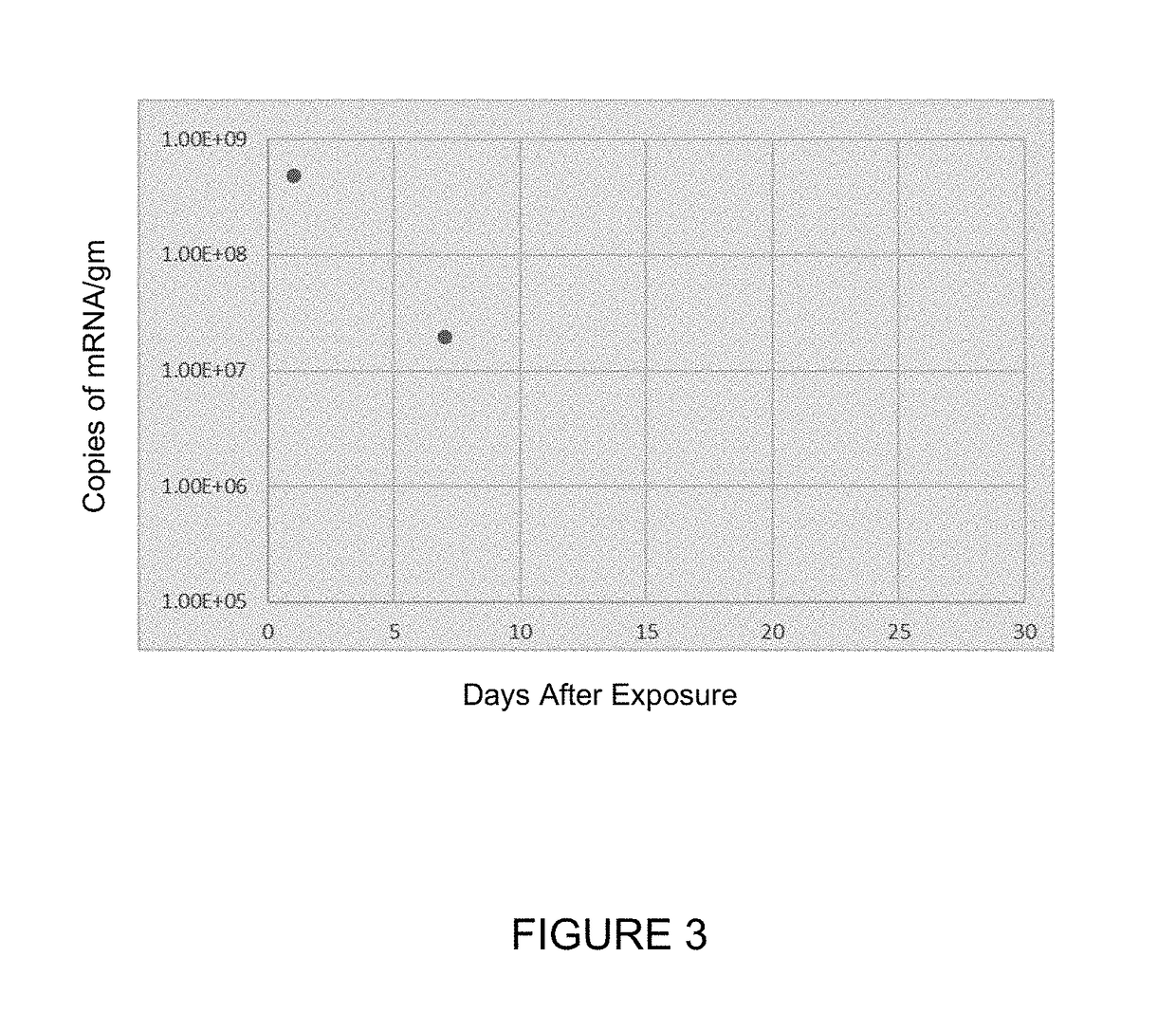TREATMENT OF CYSTIC FIBROSIS BY DELIVERY OF CODON-OPTIMIZED mRNA ENCODING CFTR
a technology of mrna and cystic fibrosis, which is applied in the direction of dispersed delivery, drug composition, peptide/protein ingredients, etc., can solve the problems of chronic lung disease, aberrant mucus production, and reduced life expectancy
- Summary
- Abstract
- Description
- Claims
- Application Information
AI Technical Summary
Benefits of technology
Problems solved by technology
Method used
Image
Examples
example 1
on of mRNA / Liposome Composition
[0196]Codon-optimized Human Cystic Fibrosis Transmembrane Conductance Regulator (CFTR) messenger RNA was synthesized by in vitro transcription from a plasmid DNA template encoding the gene, which was followed by the addition of a 5′ cap structure (Cap 1) (Fechter, P.; Brownlee, G. G. “Recognition of mRNA cap structures by viral and cellular proteins” J. Gen. Virology 2005, 86, 1239-1249) and a 3′ poly(A) tail of approximately 250 nucleotides in length as determined by gel electrophoresis. The mRNA encoding CFTR protein also comprised 5′ and 3′ untranslated regions (UTRs).
[0197]An aqueous-based solution comprising the exemplary mRNA encoding CFTR protein was combined with an ethanol-based lipid solution, isolated and dialyzed into the final formulation appropriate for storage at −80° C. FIG. 1 shows an exemplary generalized schematic of the formulation.
[0198]The lipid solution contained three lipid components to form lipid nanoparticles. The three biode...
example 2
CFTR mRNA / Liposome Composition
[0199]These studies evaluated a CFTR mRNA / liposome composition in a Sprague-Dawley rat model. No adverse effects on the central nervous system (CNS), cardiovascular (CV) system or respiration were observed.
CNS Evaluations
[0200]Neurobehavioral evaluations were performed on 6 males / group prior to dosing and on Day 1 (4 and 24 hours post-dosing). Temperature, humidity, noise level, and illumination of each room were measured and recorded to ensure that variations in environmental conditions were minimal during all evaluations. There were no effects on neurobehavior related to treatment with hCFTR mRNA-loaded ICE-based liposomes or ICE-based liposome vehicle control at inhaled doses up to 6.70 mg / kg hCFTR mRNA-loaded ICE-based liposomes.
Cardiovascular Evaluations
[0201]Male Sprague-Dawley rats (n=5 / group), which had previously been implanted with telemetry devices, were dosed via nose-only inhalation with hCFTR mRNA-loaded ICE-based liposomes for up to 6 hou...
example 3
inetics
[0208]In the study in this Example, Sprague-Dawley rats or monkeys were dosed for up to 6 hours (for rats) or for up to 2 hours (for monkeys) via inhalation with hCFTR mRNA-loaded ICE-based liposomes or with the ICE-based liposomes alone, and then sacrificed 24 hours later to measure the levels of hCFTR in various tissues. The target doses for are shown in Tables 4-6. The actual doses measured were 420, 630 and 850 μg / kg for hCFTR mRNA-loaded ICE-based liposomes administered to monkeys (corresponding to the target doses in the header of Table 4); 0.77, 4.05 and 6.70 mg / kg for hCFTR mRNA-loaded ICE-based liposomes administered to rats (corresponding to the target doses in the header of Table 5); and 0.77, 4.05 and 6.70 mg / kg for ICE-based liposomes administered to rats (corresponding to the target doses in the header of Table 6). Detailed tissue distribution results are presented below in Tables 4, 5, and 6.
TABLE 4Mean Concentrations of hCFTR mRNA in Monkey Tissues and Blood24...
PUM
| Property | Measurement | Unit |
|---|---|---|
| Fraction | aaaaa | aaaaa |
| Fraction | aaaaa | aaaaa |
| Fraction | aaaaa | aaaaa |
Abstract
Description
Claims
Application Information
 Login to View More
Login to View More - R&D
- Intellectual Property
- Life Sciences
- Materials
- Tech Scout
- Unparalleled Data Quality
- Higher Quality Content
- 60% Fewer Hallucinations
Browse by: Latest US Patents, China's latest patents, Technical Efficacy Thesaurus, Application Domain, Technology Topic, Popular Technical Reports.
© 2025 PatSnap. All rights reserved.Legal|Privacy policy|Modern Slavery Act Transparency Statement|Sitemap|About US| Contact US: help@patsnap.com



